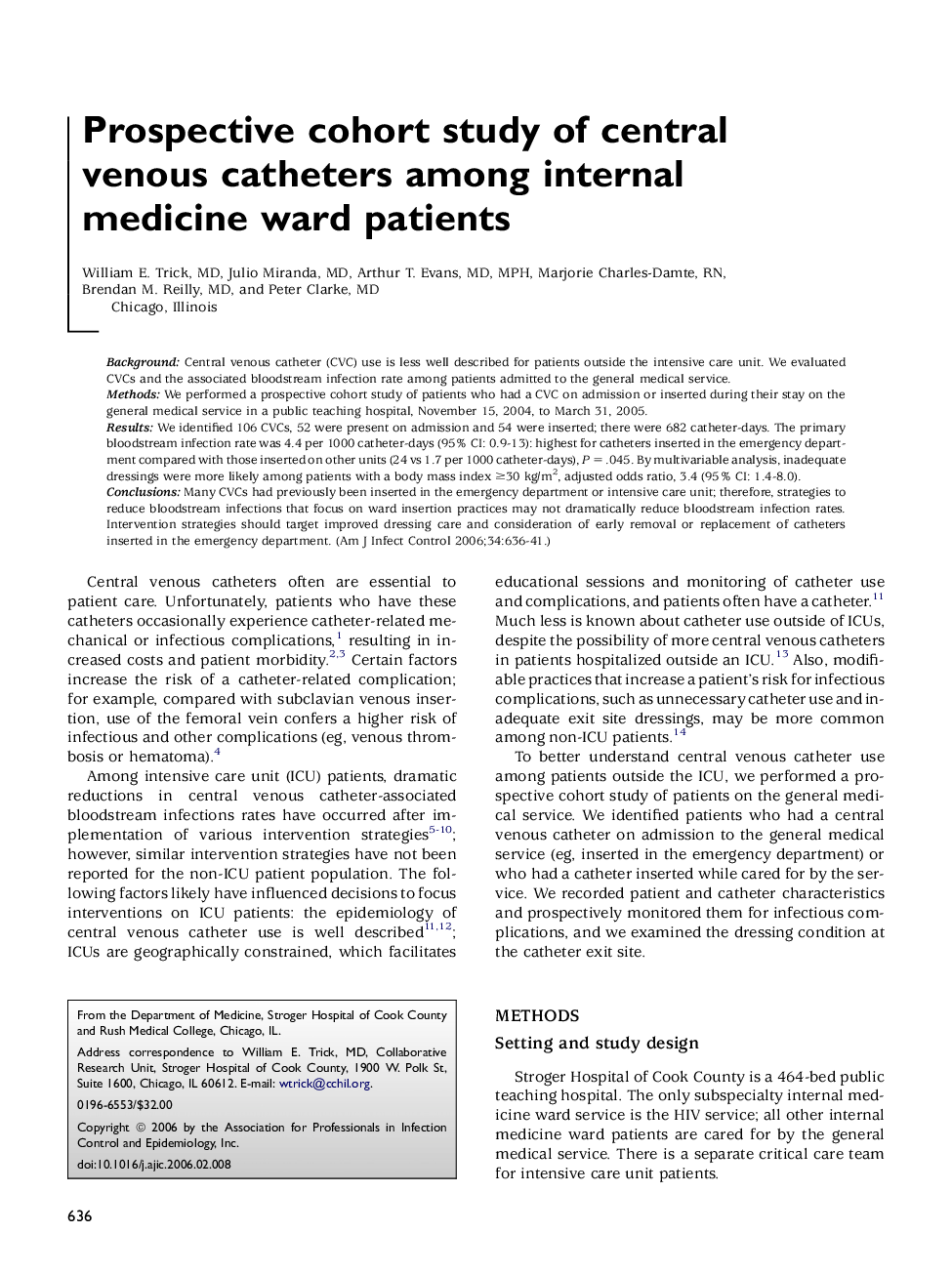| Article ID | Journal | Published Year | Pages | File Type |
|---|---|---|---|---|
| 2639777 | American Journal of Infection Control | 2006 | 6 Pages |
BackgroundCentral venous catheter (CVC) use is less well described for patients outside the intensive care unit. We evaluated CVCs and the associated bloodstream infection rate among patients admitted to the general medical service.MethodsWe performed a prospective cohort study of patients who had a CVC on admission or inserted during their stay on the general medical service in a public teaching hospital, November 15, 2004, to March 31, 2005.ResultsWe identified 106 CVCs, 52 were present on admission and 54 were inserted; there were 682 catheter-days. The primary bloodstream infection rate was 4.4 per 1000 catheter-days (95% CI: 0.9-13): highest for catheters inserted in the emergency department compared with those inserted on other units (24 vs 1.7 per 1000 catheter-days), P = .045. By multivariable analysis, inadequate dressings were more likely among patients with a body mass index ≥30 kg/m2, adjusted odds ratio, 3.4 (95% CI: 1.4-8.0).ConclusionsMany CVCs had previously been inserted in the emergency department or intensive care unit; therefore, strategies to reduce bloodstream infections that focus on ward insertion practices may not dramatically reduce bloodstream infection rates. Intervention strategies should target improved dressing care and consideration of early removal or replacement of catheters inserted in the emergency department.
